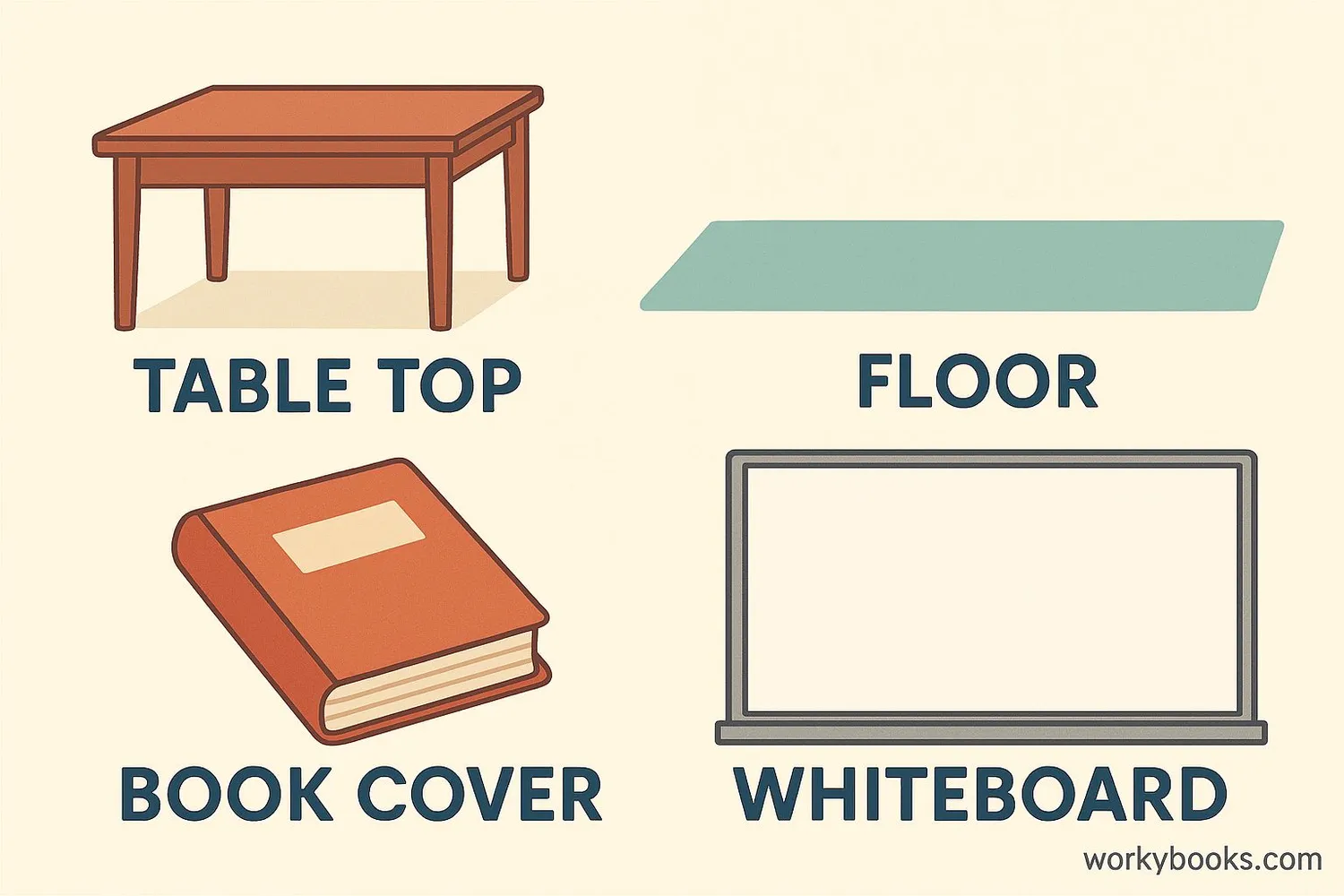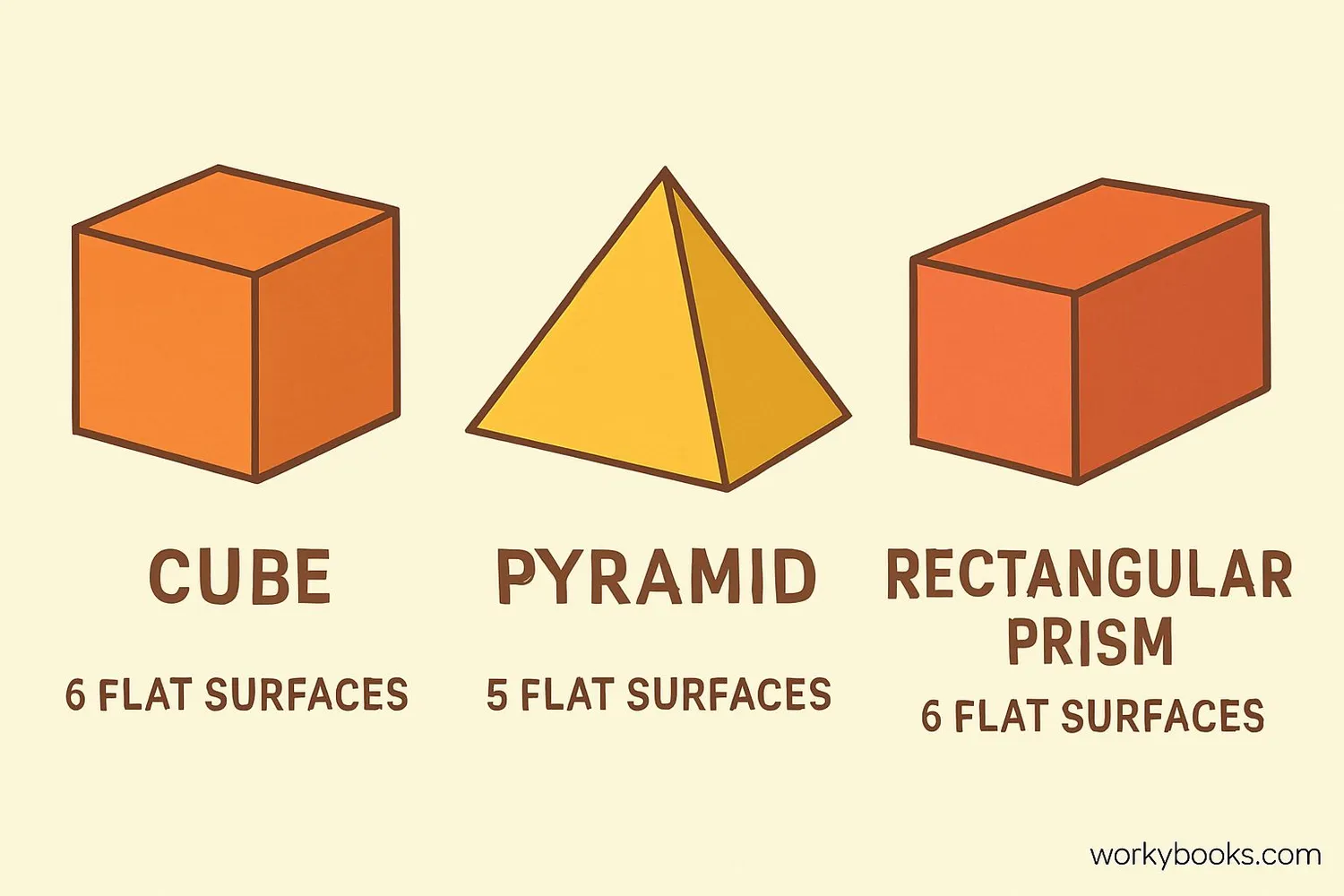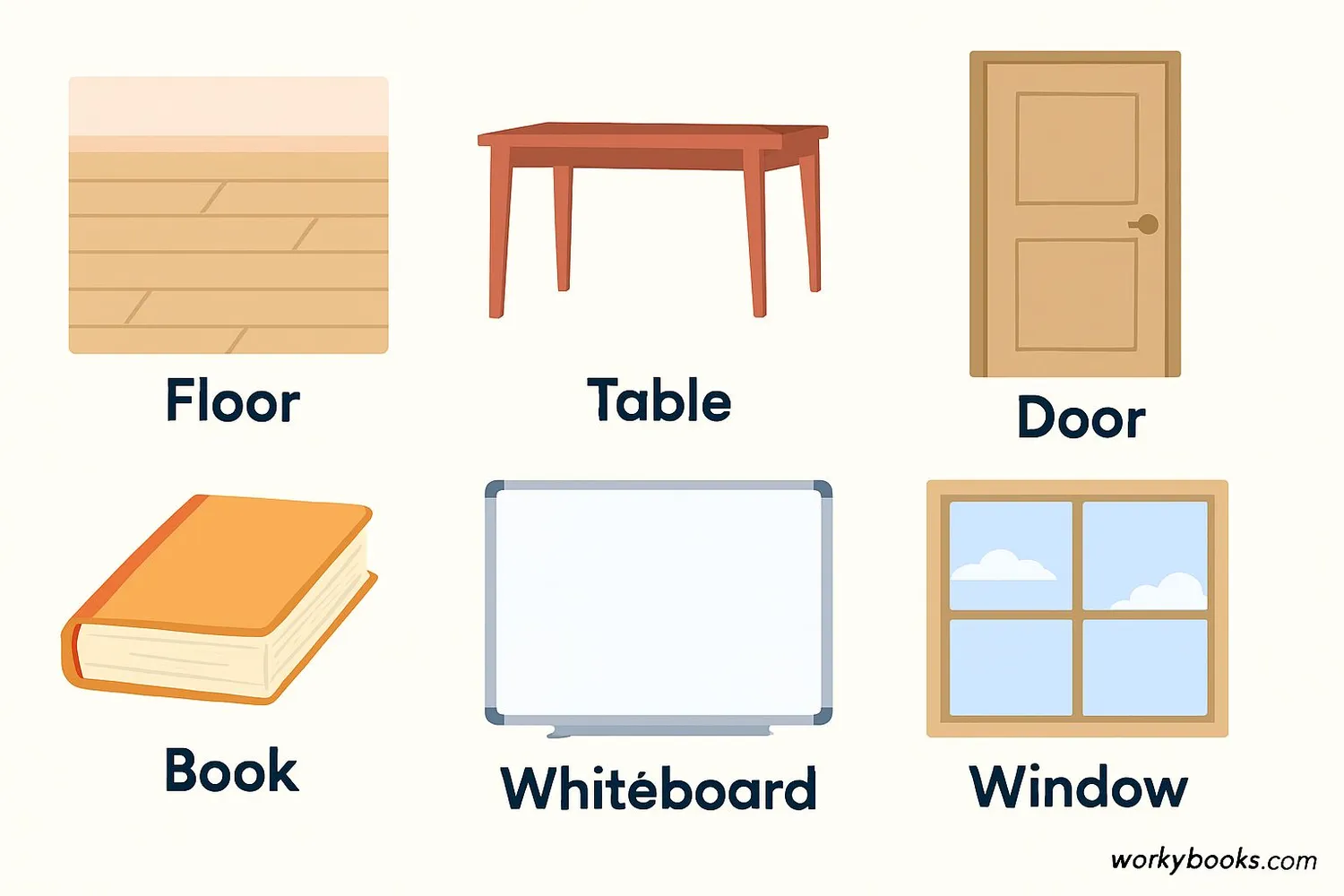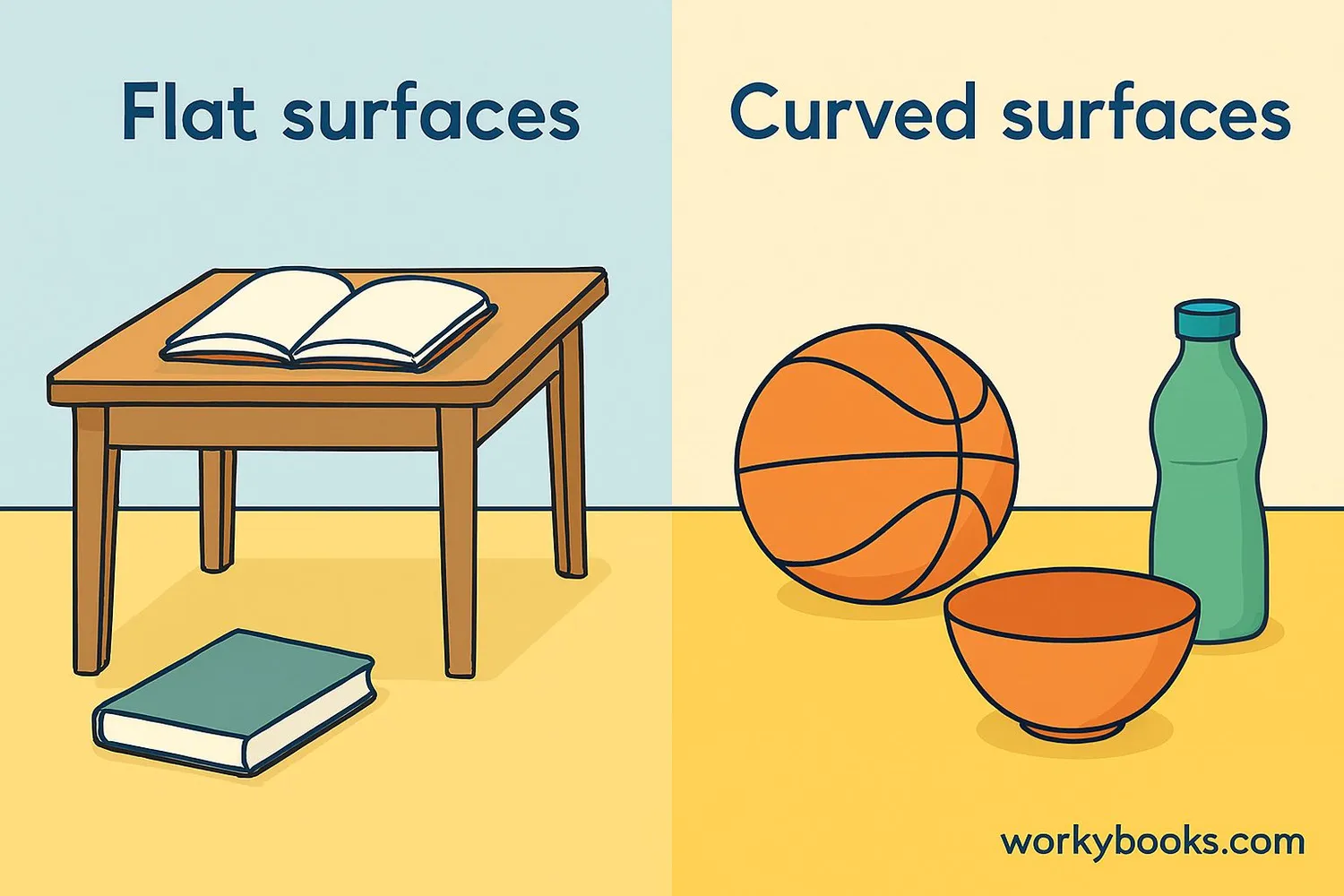Flat Surface - Definition, Examples, Quiz, FAQ, Trivia
Learn about flat surfaces in geometry with easy explanations, examples, and interactive activities
What is a Flat Surface?

Definition
A flat surface is a surface that is completely level and even. It has no bumps, curves, or waves. In geometry, flat surfaces are also called planes. They extend in all directions without curving.
Flat surfaces are everywhere around us! Think about the top of your desk or the floor in your classroom - these are flat surfaces. Flat surfaces are important in geometry because they help us understand shapes and how objects fit together.
All flat surfaces have these important characteristics:
• They are completely level with no curves or bumps
• They extend forever in all directions (even though real objects have edges)
• Any two points on a flat surface can be connected with a straight line
In math, we call a flat surface a "plane." You can imagine a plane as a perfectly flat sheet of paper that goes on forever in every direction. All 2D shapes (like triangles, squares, and circles) lie flat on a plane.
Key Concept
Flat surfaces are where 2D shapes live! Triangles, squares, circles and other flat shapes all exist on flat surfaces.
Examples of Flat Surfaces

Many geometric shapes have flat surfaces. These shapes are called polyhedrons. Let's look at some common shapes and count their flat surfaces:
Cube
6 flat surfaces
Pyramid
5 flat surfaces
Rectangular Prism
6 flat surfaces
Tetrahedron
4 flat surfaces
Some shapes have both flat and curved surfaces. A cylinder has 2 flat surfaces (the top and bottom) and 1 curved surface. A cone has 1 flat surface (the base) and 1 curved surface. A sphere has no flat surfaces at all - it's completely curved!
Remember
The number of flat surfaces a shape has is called its number of "faces." A cube has 6 faces, all of them flat surfaces.
Flat Surfaces in Real Life

Flat surfaces are all around us in our daily lives. Here are some common examples:
- The floor in your classroom or home
- The top of your desk or table
- The pages of a book
- A whiteboard or chalkboard
- A door
- A window pane
- A wall
- A soccer field
- A computer screen
Why are flat surfaces important in real life? They make it easier to build things, write on surfaces, stack objects, and play games. Imagine trying to write on a bumpy piece of paper - it would be very difficult! Flat surfaces give us stable areas to work and play.
Real-World Connection
Architects and builders use flat surfaces to create stable structures like houses, bridges, and furniture.
Flat Surfaces vs Curved Surfaces

Understanding the difference between flat and curved surfaces helps us describe the world around us. Let's compare them:
| Flat Surfaces | Curved Surfaces |
|---|---|
| Completely level and even | Have bends or curves |
| Extend in straight lines | Have rounded shapes |
| Examples: floor, table top, wall | Examples: ball, bowl, slide |
| Good for writing and stacking | Good for rolling and holding liquids |
| All points are at the same level | Points are at different heights |
Some objects have both flat and curved surfaces! A can of soda has a flat top and bottom, but a curved side. A car has mostly curved surfaces but flat windows. Look around you - how many objects can you find that have both types of surfaces?
Did You Know?
Planet Earth looks flat to us, but it's actually a sphere with a curved surface! That's why ships disappear over the horizon.
Flat Surface Practice Quiz
Test your knowledge with this 5-question quiz. Choose the correct answer for each question.
Frequently Asked Questions
Here are answers to common questions about flat surfaces:
Geometry Trivia
Discover interesting facts about flat surfaces and geometry:
Ancient Geometry
The ancient Egyptians used their knowledge of flat surfaces to build the pyramids over 4,500 years ago! They created perfectly flat bases for these massive structures.
Nature's Flat Surfaces
Honeybees create flat surfaces in their honeycombs. The wax cells have flat sides where they connect with other cells, forming a strong structure for storing honey.
Space Geometry
In space, liquids form perfect spheres because there's no gravity to flatten them. But inside spacecraft, astronauts use specially designed containers to create flat surfaces for their drinks!
World's Flattest Place
Salar de Uyuni in Bolivia is the world's flattest place. This salt flat is so large and flat that people use it to calibrate satellites! When covered with water, it creates a giant mirror.





